Our first year on the homestead, before we got all our gardens started, we bought the bulk of our fresh produce at the local farmers market. I remember one sunny, late-summer morning when I spied a glossy, purply-green bunch of unbelievably long beans at a vendor’s stall.
Generous handfuls of beans were tied in neat bundles like a mass of dreadlocks, and I was excited. The last time I’d had them, it was after a grocery run in Chinatown when we still lived in the city.
The vendor looked surprised when I chose them. “You know what these are?”
“Yes!” I replied. “Long beans are amazing. Do you sell lots of them?”
The soft-eyed woman looked at me with a bit of a shrug. “You’re the only one who’s been interested. I’ve not made a single sale of these beans. Folks can’t get over the purple color — even though they turn green when you cook ’em.”
We left the market with the whole lot and feasted on garlicky stir-fried beans for lunch.
Now that we have our gardens well established, I don’t think I’d ever go a summer without planting a few rows of this underappreciated, super productive, bizarrely long beans.
Though they’ve been called many names including asparagus beans, yardlong beans, Chinese long beans, noodle beans, snake beans, dow guak, and Vigna unquiculata var. sesquipedalis, I’d hazard a guess that many of you have never heard of these legumes (by any name). But if I do my job right, I hope you join me in cultivating this beautiful, unusual, and delicious plant next season.
What Are Long Beans?
The eponymous seed pods come in a variety of colors including green, purple, and even a shiny red. I know the name of these beans may seem an exaggeration, but it’s not a misleading one. The thin, edible pods of this vining bean are longer than any you’ve ever seen.
Though they really can reach an incredible 3 feet long in ideal conditions, they more usually grow to 1 or 2 feet — which is the variation part of the scientific name. Sesquipedalis means “foot-and-a-half” and is a pretty accurate measurement for most pods.
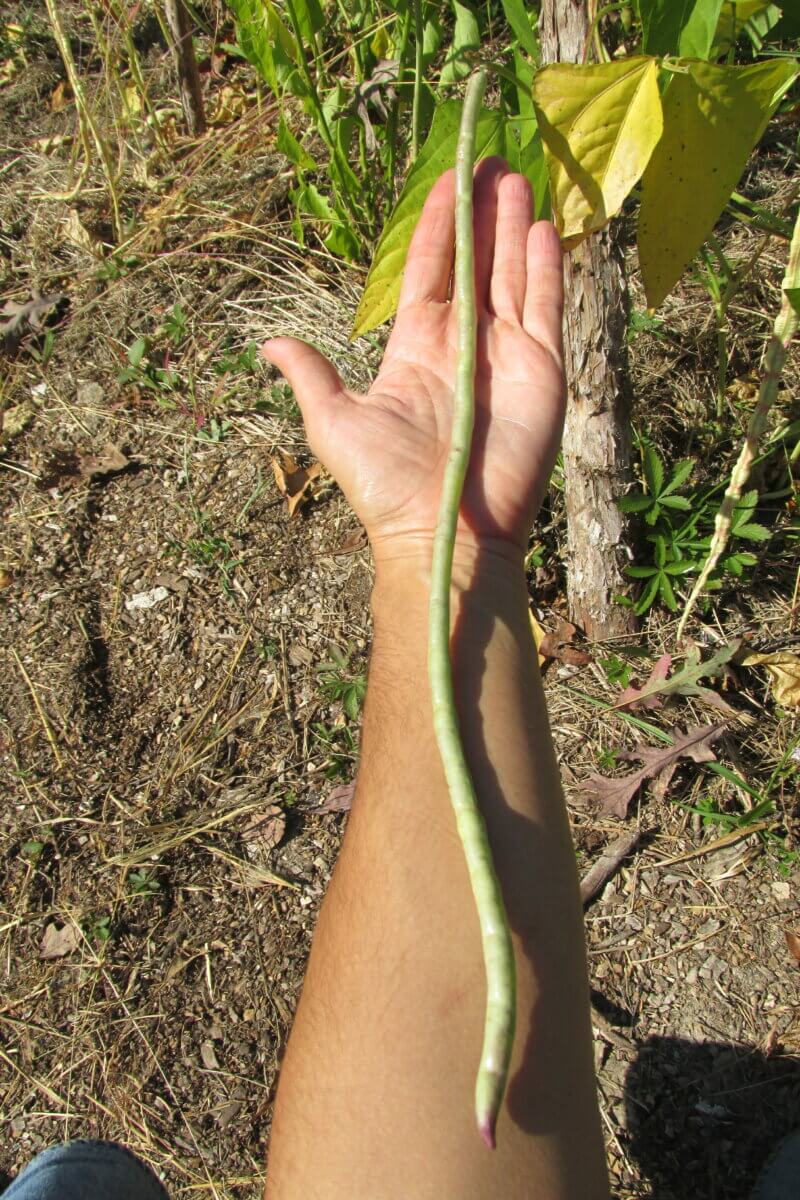
These beans flourish in the heat and are actually more closely related to cowpeas than the common green beans you typically grow. And like cowpeas, they need a nice, long growing season — around 75 days. Though there are a few cultivars (such as orient wonder) specifically aimed at colder regions, gardeners in zones 5 and up will have the best success growing these beans.
Related Post: Growing Green Beans
These are short-day plants, meaning that they won’t start flowering or forming those gorgeous pods until mid or late summer. Once they do start to flower, though, you may be surprised by the delicate beauty of their purple, pea-like blossoms. As an edible landscaping feature, they are definitely a conversation piece!
Growing Long Beans
Yardlong bean vines grow large — around 8 feet long at full growth — but their foliage is not overwhelming and their growth can be directed vertically. So despite their size, they can handily fit in a smaller garden if you implement a nice trellis to allow for their vines, and make sure they’re positioned at the back where they won’t shade anything else.
Their vining habit is to slowly twist around a support as they grow rather than putting out pea-like tendrils, so make sure your support structure has some sort of pole or stout string for them to grab onto and twist. I have had great success lashing sapling trunks into a simple tripod. Any sturdy branch could do.
Direct sow these beans if you can, as they are not happy about being transplanted. If you live in an area with a short growing season, you can try starting them about three weeks before the last expected frost in larger, individual containers.
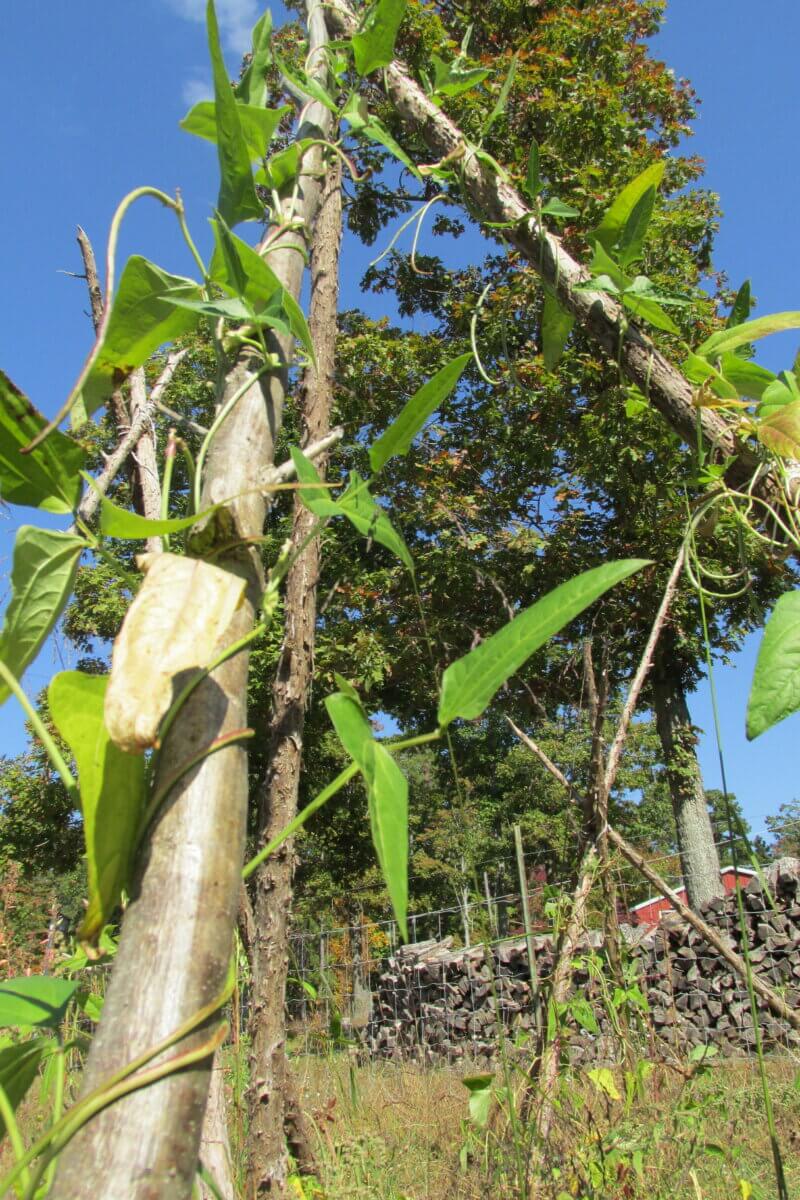
Don’t set out these heat-loving beans until the nights have reached temperatures in the 60s. Seeds should be put about an inch into the ground, and plants spaced roughly 4 inches from each other. I like to cluster four seeds around the support posts of my trellis, allowing them to vine up in a wonderfully twisty, somewhat unkempt symphony.
Yardlong beans need full sun, and though they do best in soil with a nice bit of compost worked in, they can do just fine in scanty soil as well. They are legumes, after all, and can fix nitrogen as well as the rest of their helpful bean family.
Related Post: Growing Black Beans
And like their cowpea cousins, yardlong beans are champs when it comes to drought. Though any garden plant does well with regular watering, a dry spell won’t spell disaster for your beans as it could for other denizens of your veggie patch.
Adding to their ease in growing, pests and diseases really don’t bother these plants very much, if at all. The only trouble you may face is an occasional summer with inexplicably low yields. I’ve not had that summer yet, but I hear they can happen.
Harvesting Long Beans
Harvesting long beans is as easy as growing them. Simply pick them from the vine when they’re at least a foot long, and keep visiting your bean patch every day. There will be more waiting for you. Though they grow to a great length, long beans stay tender for a really long time.
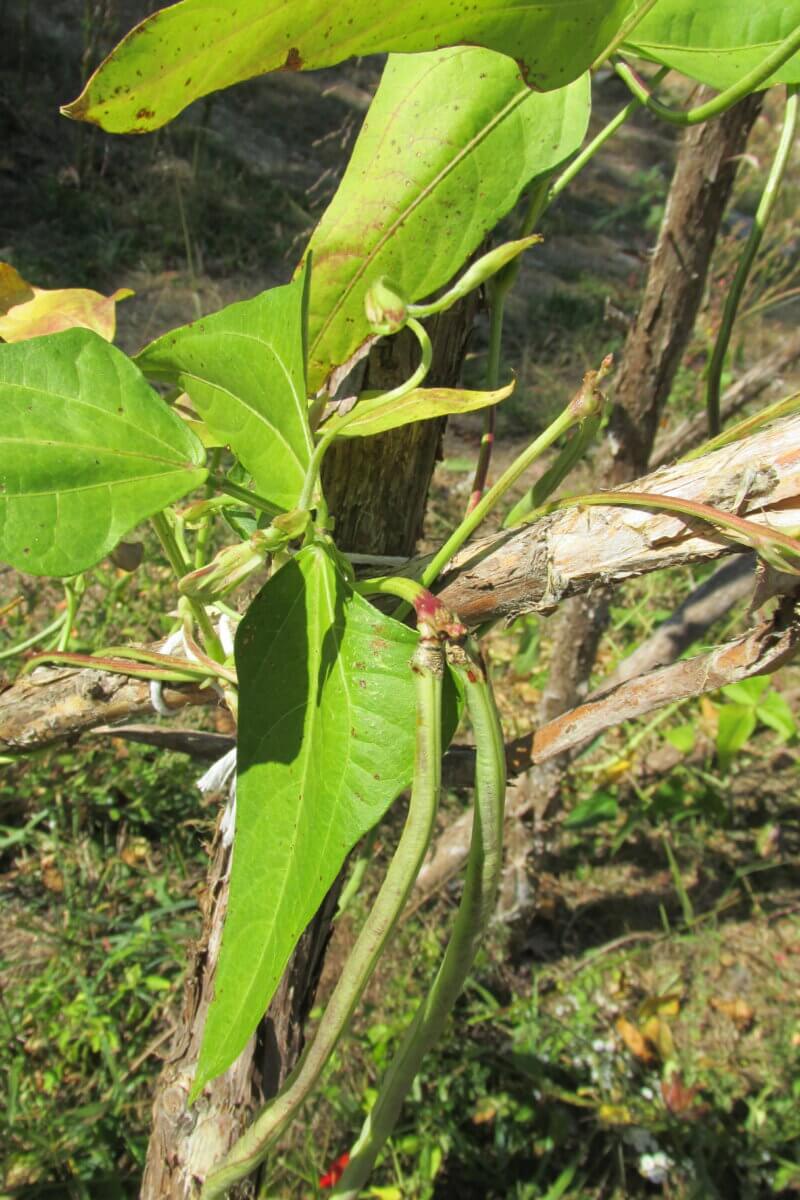
They’re only too far gone once they start losing their green luster and turn pale yellow, and if they somehow get that far, leave those pods to produce next year’s seed.
Just be sure to leave the growing buds alone when you’re harvesting your beans. The buds will continue to grow pods on the same stem if undamaged.
Saving Seeds
Saving seeds from your vines is a snap. They’re self-pollinating and unlikely to cross, so heirloom varieties will have no problem breeding true. Select some of the best-looking pods from your best-growing plants, and simply leave them alone. They’ll grow and grow and grow, shifting from their glossy green or purple to a waxy yellow. Then they’ll start to dry.
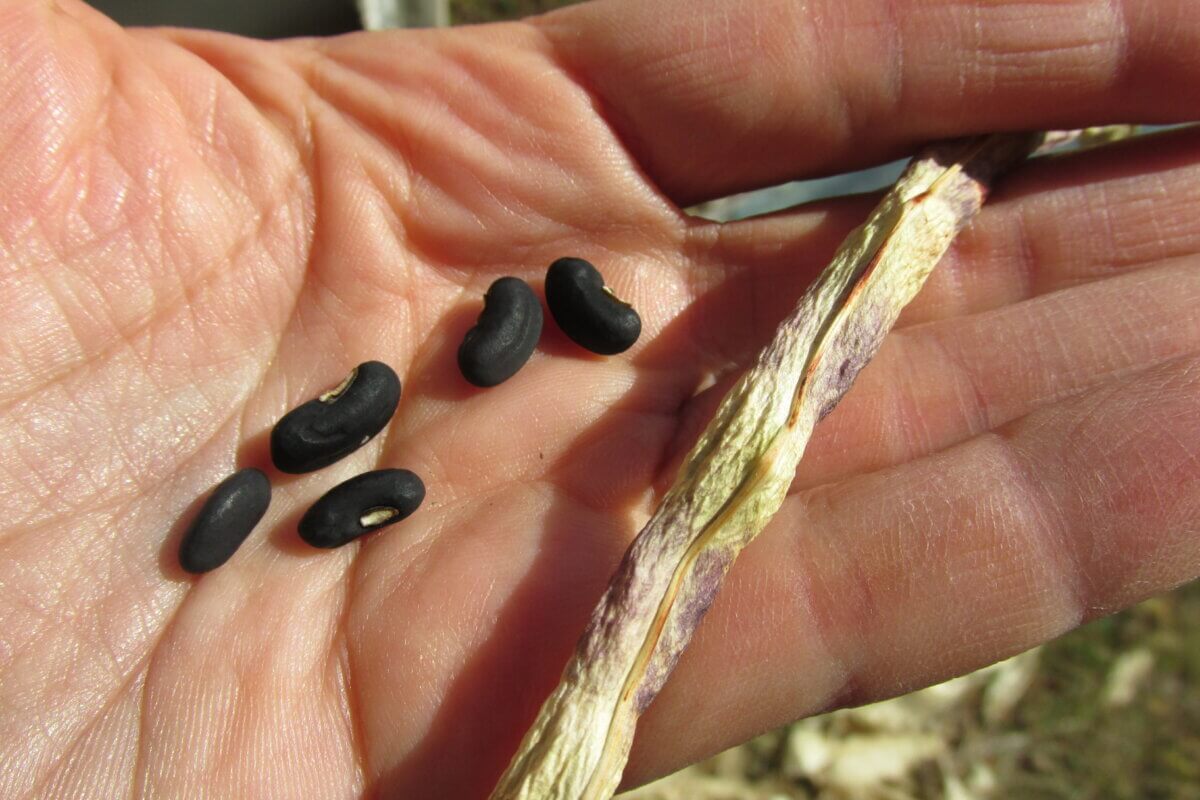
Once the seedpod is nearly dry — but not completely, or you run the risk of it shattering and scattering the seeds — pick it, and allow it to fully dry until crispy. A quick squeeze between your hands will break the brittle seedpods, and the shiny black or maroon seeds will tumble out. Store them in a dry, cool location until it’s time to plant again.
Cooking and Using Long Beans
Though they’re sometimes called asparagus beans, I really don’t get that flavor from them personally. Though they’re undeniably beans in flavor, I think they taste different from green beans; perhaps with a bit more umami and less of the green grassiness you’re used to with common beans. If you have raised cowpeas as “green beans,” you have an idea how these taste. Regardless, they’re tasty, and you can use them any way that you would more common green beans, fresh or cooked.
Related Post: Canning Green Beans
My personal favorite way to use them is in a spicy, stir-fry. Sliced on a bias, they add a fresh pop of color and texture.
You could even try twisting these flexible beans into knots and roasting them. Top with a sprinkle of olive oil, black pepper, and parmesan. The pickiest of kids could forget to dislike vegetables at the sight of that whimsical preparation, and join the rest of us in the bean appreciation!
Long Bean Recipes
If you’re looking for ways to use long beans in your kitchen, here are some of our favorite recipes.
- Chinese Long Beans With Cracked Black Pepper from Food & Wine
- Spicy Stir-Fried Chinese Long Beans With Peanuts from Epicurious
- Wok-Seared Long Beans With Garlic from Williams Sonoma
- Grilled Long Beans With Creamy Pasilla Chile from EatingWell
If you have the chance to grow some of these enjoyable plants next season, I hope you do. And if you ever happen upon your own farmers market where there’s an underappreciated bundle of inexplicably long, slender beans, bring them home and give them the treatment they deserve.


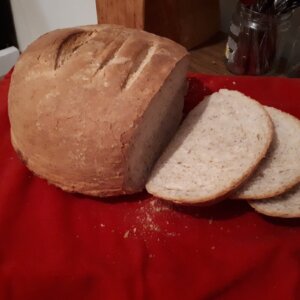

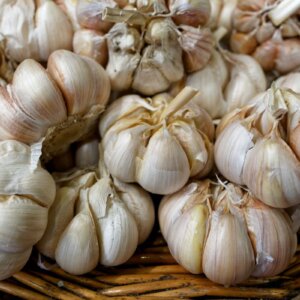


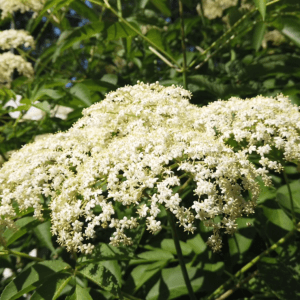

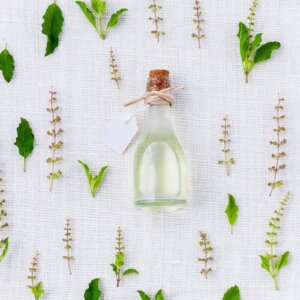

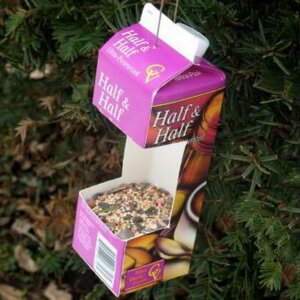

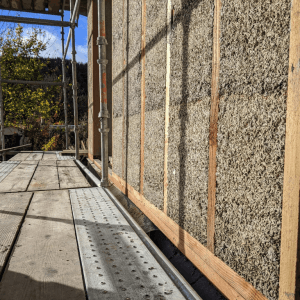

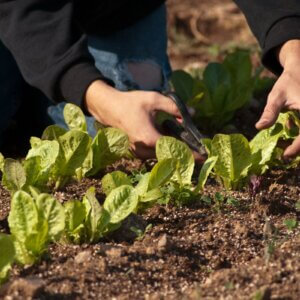


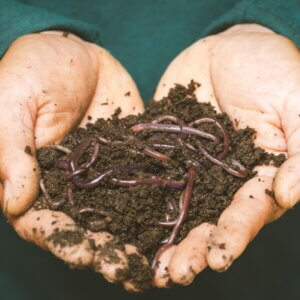


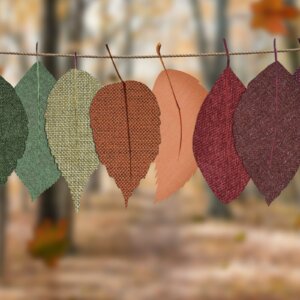



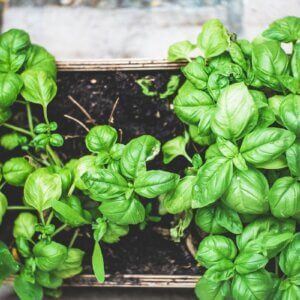
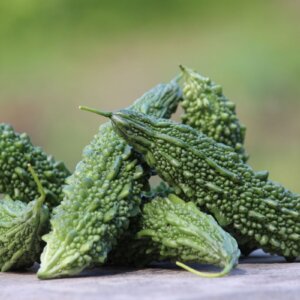


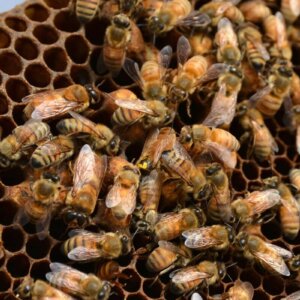
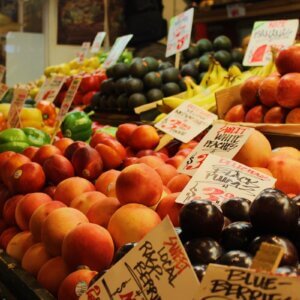

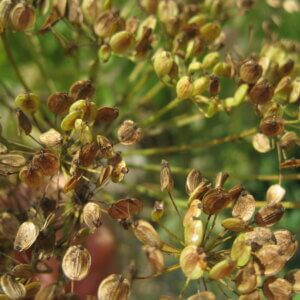



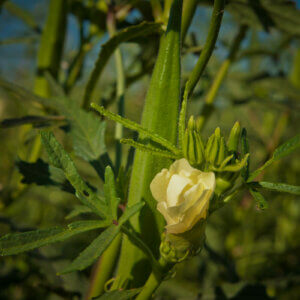
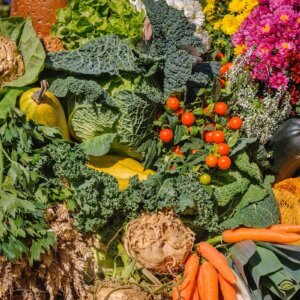


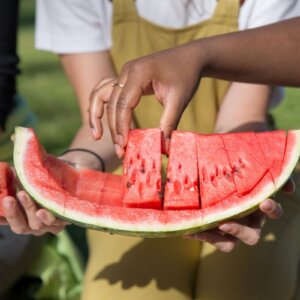

I enjoyed this article very much, thank you.
Thank you for the article. Now I know what kind of beans are growing in my garden. Looking forward to tasting them.
These are not my beans. Mine are ???
Green quickly to deep purple, stiff at all stages, leaves 3 loved but purple edges and long shield (2 little points at base of long point). What are mine and are they edible or poisonous? Can’t upload cuz cell too full to photo.